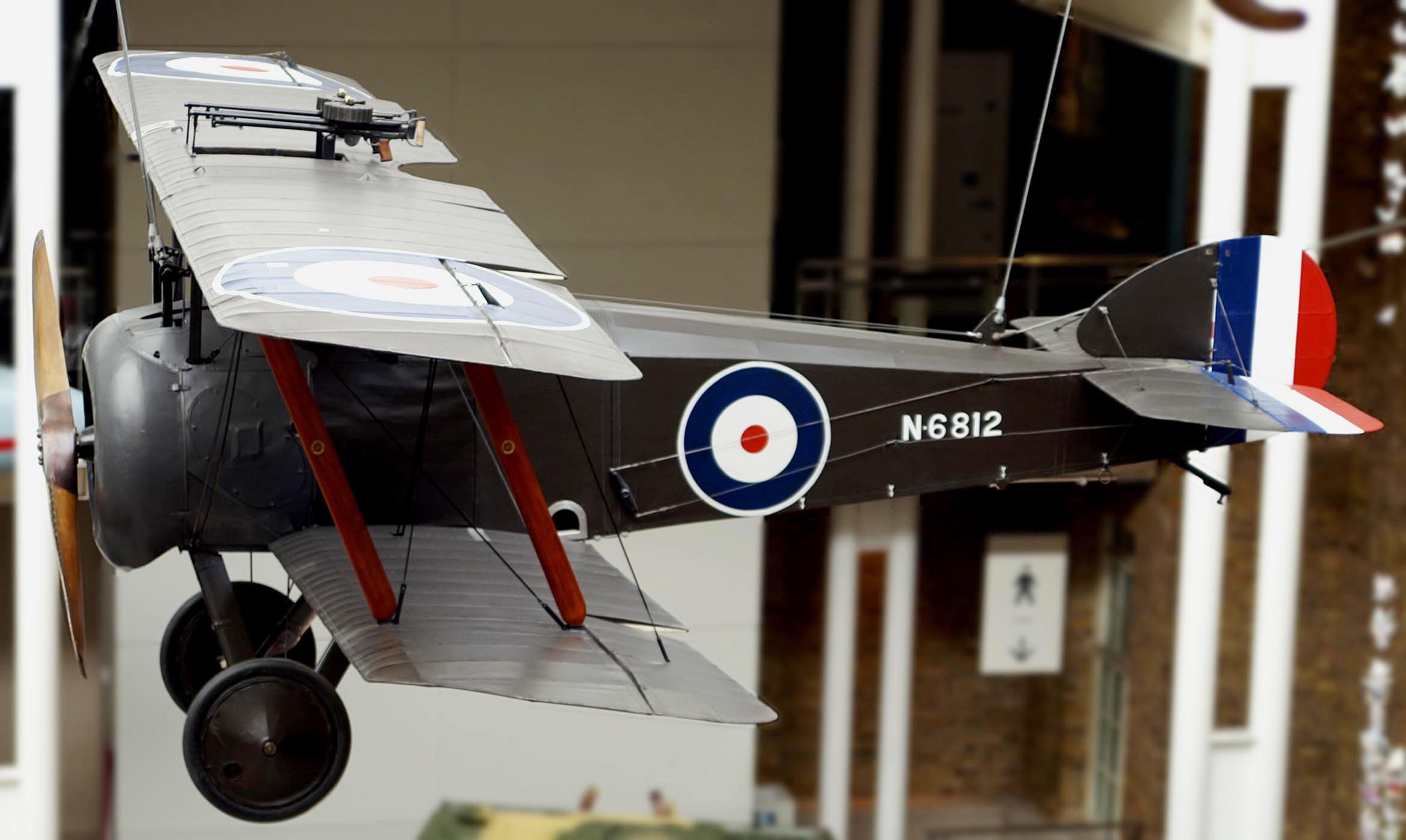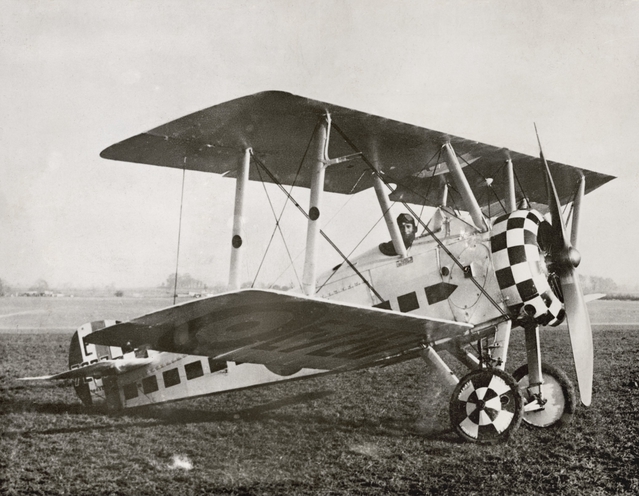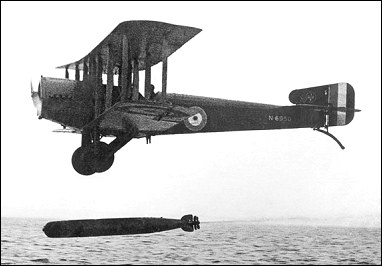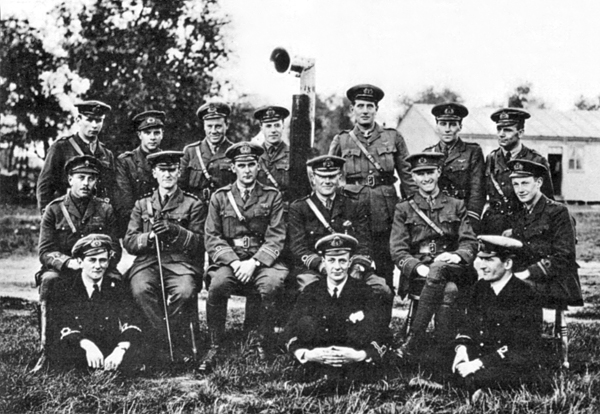|
Tondern Raid
The Tondern raid or Operation F.7, was a British bombing raid mounted by the Royal Navy and Royal Air Force against the Imperial German Navy airship base at Tønder, Denmark, then a part of Germany. The airships were used for the strategic bombing of Britain. It was the first attack in history by aircraft from an aircraft carrier. On 19 July 1918, seven Sopwith Camels took off from the converted battlecruiser . For the loss of one man and several aircraft, the British destroyed Zeppelins L 54, L 60 and a captive balloon. Background In March 1918 the battlecruiser joined the Grand Fleet at Scapa Flow, flying the flag of the Rear Admiral Commanding Aircraft, Richard Phillimore. ''Furious'' had been converted for use as an aircraft carrier during her construction, with a flight deck forward of her main superstructure. During 1917 the carrier had been equipped with Sopwith Camel 2F.1a, naval variant of the Sopwith Camel. These partially replaced the Sopwith 1½ Strutter. In ... [...More Info...] [...Related Items...] OR: [Wikipedia] [Google] [Baidu] |
Sopwith Camel
The Sopwith Camel is a British First World War single-seat biplane fighter aircraft that was introduced on the Western Front in 1917. It was developed by the Sopwith Aviation Company as a successor to the Sopwith Pup and became one of the best known fighter aircraft of the Great War. The Camel was powered by a single rotary engine and was armed with twin synchronized Vickers machine guns. Though difficult to handle, it was highly manoeuvrable in the hands of an experienced pilot, a vital attribute in the relatively low-speed, low-altitude dogfights of the era. In total, Camel pilots have been credited with downing 1,294 enemy aircraft, more than any other Allied fighter of the conflict. Towards the end of the First World War, the type also saw use as a ground-attack aircraft, partly because the capabilities of fighter aircraft on both sides had advanced rapidly and left the Camel somewhat outclassed. The main variant of the Camel was designated as the F.1. Other variants ... [...More Info...] [...Related Items...] OR: [Wikipedia] [Google] [Baidu] |
Scapa Flow
Scapa Flow viewed from its eastern end in June 2009 Scapa Flow (; ) is a body of water in the Orkney Islands, Scotland, sheltered by the islands of Mainland, Graemsay, Burray,S. C. George, ''Jutland to Junkyard'', 1973. South Ronaldsay and Hoy. Its sheltered waters have played an important role in travel, trade and conflict throughout the centuries. Vikings anchored their longships in Scapa Flow more than a thousand years ago. It was the United Kingdom's chief naval base during the First and Second World Wars, but the facility was closed in 1956. Scapa Flow has a shallow sandy bottom not deeper than and most of it is about deep; it is one of the great natural harbours and anchorages of the world, with sufficient space to hold a number of navies. The harbour has an area of and contains just under 1 billion cubic metres of water. Since the scuttling of the German fleet after World War I, its wrecks and their marine habitats form an internationally acclaimed diving lo ... [...More Info...] [...Related Items...] OR: [Wikipedia] [Google] [Baidu] |
Bernard A
Bernard (''Bernhard'') is a French and West Germanic masculine given name. It is also a surname. The name is attested from at least the 9th century. West Germanic ''Bernhard'' is composed from the two elements ''bern'' "bear" and ''hard'' "brave, hardy". Its native Old English reflex was ''Beornheard'', which was replaced by the French form ''Bernard'' that was brought to England after the Norman Conquest. The name ''Bernhard'' was notably popular among Old Frisian speakers. Its wider use was popularized due to Saint Bernhard of Clairvaux (canonized in 1174). Bernard is the second most common surname in France. Geographical distribution As of 2014, 42.2% of all known bearers of the surname ''Bernard'' were residents of France (frequency 1:392), 12.5% of the United States (1:7,203), 7.0% of Haiti (1:382), 6.6% of Tanzania (1:1,961), 4.8% of Canada (1:1,896), 3.6% of Nigeria (1:12,221), 2.7% of Burundi (1:894), 1.9% of Belgium (1:1,500), 1.6% of Rwanda (1:1,745), 1.2% of Germany ( ... [...More Info...] [...Related Items...] OR: [Wikipedia] [Google] [Baidu] |
William Dickson (RAF Officer)
Marshal of the Royal Air Force Sir William Forster Dickson, (24 September 1898 – 12 September 1987), was a Royal Naval Air Service aviator during the First World War, a senior officer in the Royal Air Force during the inter-war years and a Royal Air Force commander during and after the Second World War. Dickson was Chief of the Air Staff in the mid-1950s, in which role his main preoccupation was the establishment of the V Force and the necessary supporting weapons, airfields and personnel. He also served as the first Chief of the Defence Staff in the late 1950s. Early life Born on 24 September 1898 in Northwood, Middlesex, the son of Campbell Cameron Forster Dickson, a lawyer at the Royal Courts of Justice, and Agnes Dickson (née Nelson-Ward and a direct descendant of Lord Nelson), Dickson was educated both at Bowden House in the Sussex town of Seaford and at Haileybury College.Probert, p. 46. First World War and inter-war years Dickson joined the Royal Naval Air Service ... [...More Info...] [...Related Items...] OR: [Wikipedia] [Google] [Baidu] |
Turnhouse
Turnhouse is a suburb in the west of Edinburgh, the capital of Scotland, near Maybury, Gogar, Cammo and West Craigs. The area is south east of Edinburgh International Airport, and Turnhouse is also the name for the former Royal Air Force base, now closed, which dates back to the First World War and was the origin of the current civilian airport. It is now used for cargo operations in tandem with the main Edinburgh Airport. The then 1st Free French Squadron 340 "Ile-de-France" was located in Turnhouse during World War II, from 1941 to 1951, when it relocated to Orange, Vaucluse (France) under the name "Escadron de chasse 02.005 "Ile-de-France"" ("EC 2/5 "Ile-de-France""). :fr:Escadron de chasse 2/5 Île-de-France Turnhouse is the home of Turnhouse Golf Club Turnhouse Golf Club is a golf club situated in the West of Edinburgh on Lennie Hill at Turnhouse, Scotland. History The course dates back to 1897 when there were only 9-holes. By 1900, the layout was expanded to 18 hole ... [...More Info...] [...Related Items...] OR: [Wikipedia] [Google] [Baidu] |
Royal Flying Corps
"Through Adversity to the Stars" , colors = , colours_label = , march = , mascot = , anniversaries = , decorations = , battle_honours = , battles_label = Wars , battles = First World War , disbanded = merged with RNAS to become Royal Air Force (RAF), 1918 , current_commander = , current_commander_label = , ceremonial_chief = , ceremonial_chief_label = , colonel_of_the_regiment = , colonel_of_the_regiment_label = , notable_commanders = Sir David HendersonHugh Trenchard , identification_symbol = , identification_symbol_label = Roundel , identification_symbol_2 = , identification_symbol_2_label = Flag , aircraft_attack = , aircraft_bomber = , aircraft_el ... [...More Info...] [...Related Items...] OR: [Wikipedia] [Google] [Baidu] |
Royal Naval Air Service
The Royal Naval Air Service (RNAS) was the air arm of the Royal Navy, under the direction of the Admiralty's Air Department, and existed formally from 1 July 1914 to 1 April 1918, when it was merged with the British Army's Royal Flying Corps to form the Royal Air Force (RAF), the world's first independent air force. It was replaced by the Fleet Air Arm, initially consisting of those RAF units that normally operated from ships, but emerging as a separate unit similar to the original RNAS by the time of World War 2. Background In 1908, the British Government recognised the military potential of aircraft. The Prime Minister of the United Kingdom, Prime Minister, H. H. Asquith, approved the formation of an "Advisory Committee for Aeronautics" and an "Aerial Sub-Committee of the Committee of Imperial Defence". Both committees were composed of politicians, British Army, army officers and Royal Navy officers. On 21 July 1908 Captain Reginald Bacon, who was a member of the Aerial Na ... [...More Info...] [...Related Items...] OR: [Wikipedia] [Google] [Baidu] |
David Beatty, 1st Earl Beatty
Admiral of the Fleet David Richard Beatty, 1st Earl Beatty (17 January 1871 – 12 March 1936) was a Royal Navy officer. After serving in the Mahdist War and then the response to the Boxer Rebellion, he commanded the 1st Battlecruiser Squadron at the Battle of Jutland in 1916, a tactically indecisive engagement after which his aggressive approach was contrasted with the caution of his commander Admiral Sir John Jellicoe. He is remembered for his comment at Jutland that "There seems to be something wrong with our bloody ships today", after two of his ships exploded. Later in the war he succeeded Jellicoe as Commander in Chief of the Grand Fleet, in which capacity he received the surrender of the German High Seas Fleet at the end of the war. He then followed Jellicoe's path a second time, serving as First Sea Lord—a position that Beatty held longer (7 years 9 months) than any other First Sea Lord. While First Sea Lord, he was involved in negotiating the Washington Naval Trea ... [...More Info...] [...Related Items...] OR: [Wikipedia] [Google] [Baidu] |
Victoria Cross
The Victoria Cross (VC) is the highest and most prestigious award of the British honours system. It is awarded for valour "in the presence of the enemy" to members of the British Armed Forces and may be awarded posthumously. It was previously awarded by countries of the Commonwealth of Nations, most of which have established their own honours systems and no longer recommend British honours. It may be awarded to a person of any military rank in any service and to civilians under military command. No civilian has received the award since 1879. Since the first awards were presented by Queen Victoria in 1857, two-thirds of all awards have been personally presented by the British monarch. The investitures are usually held at Buckingham Palace. The VC was introduced on 29 January 1856 by Queen Victoria to honour acts of valour during the Crimean War. Since then, the medal has been awarded 1,358 times to 1,355 individual recipients. Only 15 medals, of which 11 to members of the Britis ... [...More Info...] [...Related Items...] OR: [Wikipedia] [Google] [Baidu] |
Richard Bell-Davies
Vice Admiral Richard Bell Davies (19 May 1886 – 26 February 1966), also known as Richard Bell-Davies, was a senior Royal Navy commander, naval aviator, and a First World War recipient of the Victoria Cross, the highest award for gallantry in the face of the enemy that can be awarded to British and Commonwealth forces. Early life and career Born in Kensington, London, Davies was orphaned by the age of five and was brought up by an uncle, a doctor. He attended Bradfield College in Berkshire between September 1899 and April 1901. Davies enlisted in the Royal Navy in 1901 joining , and on 15 September 1902 was posted as a naval cadet to the protected cruiser HMS ''Diana'', serving with the Mediterranean Fleet. In 1910 he took private flying lessons, and in 1913 he was accepted into the Royal Naval Air Service (RNAS) and was appointed a squadron commander. First World War Distinguished Service Order In the early days of the war, Davies and Richard Peirse carried out a numb ... [...More Info...] [...Related Items...] OR: [Wikipedia] [Google] [Baidu] |
Robert Clark-Hall
Air Marshal Sir Robert Hamilton Clark-Hall (21 June 1883 – 8 March 1964) was a squadron and wing commander in the Royal Naval Air Service during the First World War and a senior Royal Air Force commander in the 1920s and early 1930s. Clark-Hall returned to service during the Second World War after volunteering to serve with the Royal New Zealand Air Force. First World War Commanded the first seaplane carrier at Gallipoli. He then commanded No. 1 Wing Royal Naval Air Service conducting surveillance and attacks on enemy shipping from St Pol-sur-Mer, Dunkirk between September 1916 and November 1918, and was awarded the Chevalier of the Legion of Honour for his services to the war in February 1919.M. Brewer, 'New Zealand and the Legion d'honneur: Officiers, Commandeurs and Dignites', The Volunteers: The Journal of the New Zealand Military Historical Society, 35(3), March 2010, pp. 131–147. Second World War At the outbreak of the Second World War, Clark-Hall was in his late-50s, ... [...More Info...] [...Related Items...] OR: [Wikipedia] [Google] [Baidu] |
Minefield
A land mine is an explosive device concealed under or on the ground and designed to destroy or disable enemy targets, ranging from combatants to vehicles and tanks, as they pass over or near it. Such a device is typically detonated automatically by way of pressure when a target steps on it or drives over it, although other detonation mechanisms are also sometimes used. A land mine may cause damage by direct blast effect, by fragments that are thrown by the blast, or by both. Landmines are typically laid throughout an area, creating a ''minefield'' which is dangerous to cross. The use of land mines is controversial because of their potential as indiscriminate weapons. They can remain dangerous many years after a conflict has ended, harming civilians and the economy. Seventy-eight countries are contaminated with land mines and 15,000–20,000 people are killed every year while many more are injured. Approximately 80% of land mine casualties are civilians, with children as the ... [...More Info...] [...Related Items...] OR: [Wikipedia] [Google] [Baidu] |






